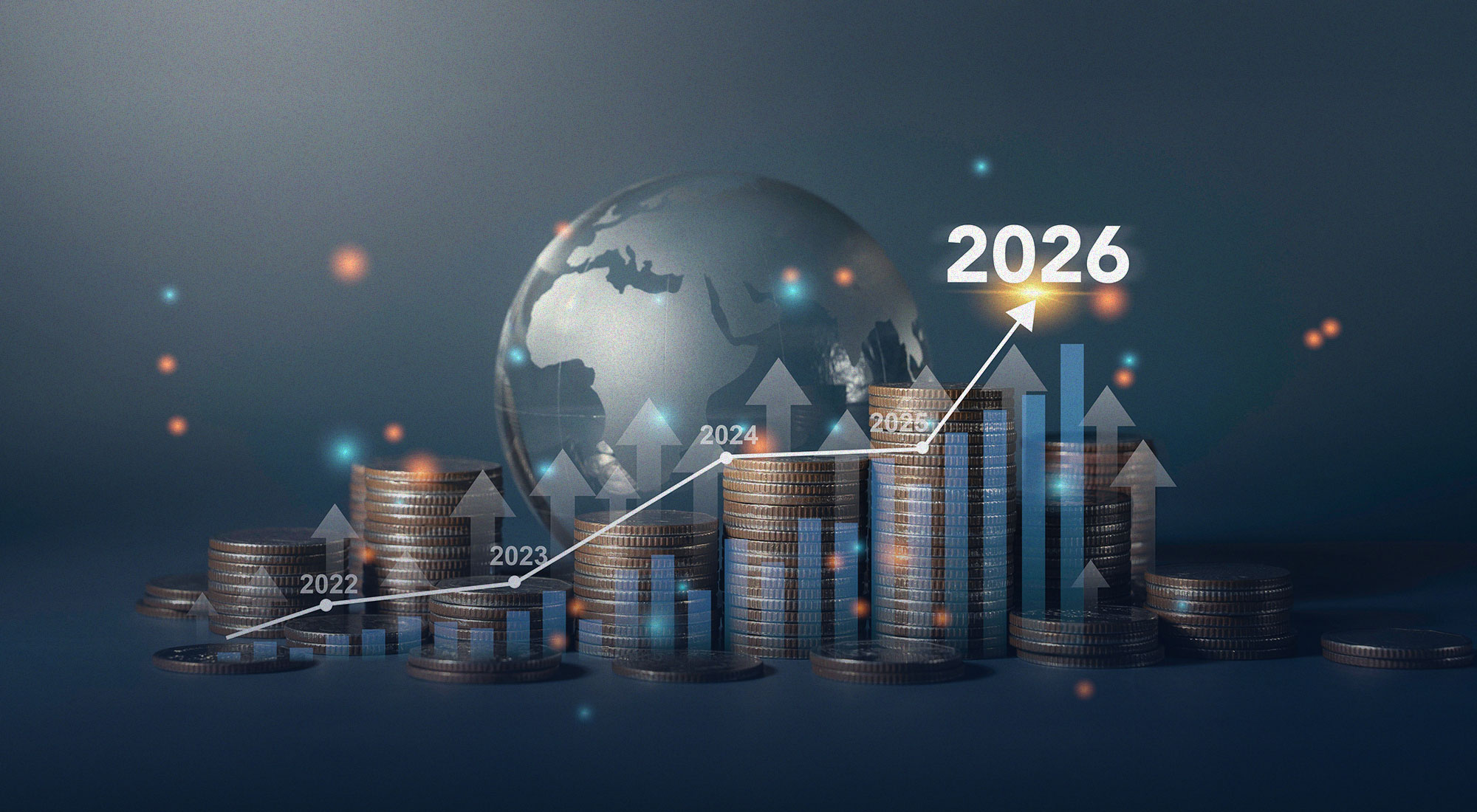Economic planning and the outlook for the Gulf region has been in the spotlight in recent weeks. The most recent highlight is the possibility that Saudi Arabia might sell off some shares in Saudi Aramco, which has generated many column inches in the world’s financial press. What lies behind the possibility of an Aramco share sale is, however, even more interesting than the possibility itself. Actions by the Saudi government and other governments in the GCC, clearly demonstrate the need for economic diversification in the region. In a recent article on the changes in Saudi Arabia, The Economist has written:
“No economic reform is taboo …: not the shredding of do-nothing public-sector workers, not the abolition of subsidies that Saudis have come to see as their birthright, not the privatisation of basic services such as education and health care. And not even the sale of shares in the crown jewel: Saudi Aramco.”
In any response to recent developments, two facts must be borne in mind:
- the oil price is currently below $35 per barrel and expected to remain low over a protracted time; and,
- Gulf states have a young demography: about 60% of the Gulf population is under 25.
The first fact wreaks havoc with budget planning. There simply is not the same amounts of money available as there used to be and this has brought the need for economic diversification to the top of the agenda.
The second fact must be considered together with two further facts:
- there is already high unemployment (running at nearly 30%) among young adults in the region; and,
- the public sector is already big.
If, the public sector across the region is employing too many people at salaries that are too high for the work performed, the sector will inevitably come under the scrutiny of anyone looking for budget cuts. If the public sector can no longer provide, or contribute to, the creation of employment, the solution can only come from the private sector. Thus, the second fact, like the first fact, has brought the need for economic diversification to the top of the agenda.
Other recent regional developments provide much food for thought in this regard.
In the middle of last year, the UAE reduced retail subsidies on petrol. Saudi Arabia delivered its budget for 2016 at the end of December 2015 (a year in which the Saudi Government cut its spending by 14%). The 2016 budget announced a further 14% year-on-year retrenchment on spending. As part of the budget, Saudi Arabia announced it, too, would reduce the gasoline subsidy, with effect from 1 January 2016. Electricity and water rates are also due to be raised as part of the first stage of “comprehensive economic, fiscal and structural reforms”.
Arab News has reported that the Saudi Ministry of Finance is considering further gradual revisions over the next five years to the prices of energy, water and electricity “to achieve efficiency in energy use, conserve natural resources, stop waste and irrational use, and minimize negative effects on low and mid-income citizens and the competitiveness of the business sector.” The report goes on to say that specific commodities, like tobacco and soft drinks, are goods on which “additional fees” will be imposed.
As part of the proposed structural reforms, it is reported that measures will also be taken to
- reduce the growth of recurrent Government expenditure (notably on wages and salaries);
- increase the use of IT;
- develop and strengthen control and governance mechanisms;
- revise competition and procurement laws in accordance with global best practice; and,
- establish a public debt management unit.
In a series of high-level inter-Governmental meetings last year, the GCC nations have also approved the coordinated introduction of a low-level (about 5%) VAT, to be implemented by national legislation in each of the GCC nations in accordance with a common framework agreement.
On the employment front, Sir John Jenkins, a former British ambassador to Saudi Arabia, writing in The New Statesman, has spoken about the need to “create perhaps an extra four million new jobs by 2020” in Saudi Arabia. For a country of 28.7 million people, that means creating jobs for nearly 14% of the population. It is also reported in The Economist that a Transformation Plan 2020, to be published by end-January 2016, will be premised on an intention “to create jobs for a workforce that will double by 2030”. Those statistics reflect the stark demographic realities in the region, and demonstrate the size of the problem at hand. The old cry, “Education, education, education!”, might be part of the answer, but the Gulf is already producing at least an elite of highly-educated, highly-skilled graduates. Such graduates tend to head into Government, the professions and the service sector. Vocational training will also be necessary if a manufacturing base is to be grown. For that, foreign direct investment will also need to be encouraged, which will in turn look for strong governance, absence of corruption, robust dispute resolution mechanisms, and an independent judiciary.
This is big stuff. It is also necessary. The manner of delivery is also as important, perhaps more so, than the goal itself. The early signs are encouraging.
All GCC countries are facing similar challenges. The variable element is not what needs to be done, but the time period over which it must be achieved. For some countries the problems are less time-critical than for others. All GCC countries are coming up with similar responses. It is convenient to take the recent developments in Saudi Arabia by way of example.
The broad strategy behind those “comprehensive economic, fiscal and structural reforms” is now becoming clear. It involves:
- reduction/elimination of Government subsidies to the public;
- introduction of indirect taxation (VAT);
- introduction of excises (on tobacco, soft drinks);
- a “war on waste” internal Government efficiency drive;
- introduction of legal provisions to support economic efficiency (competition and procurement laws); and.
- awareness of public opinion and the need to “minimize negative effects on low and middle-income citizens”.
The last point is very important because, in isolation, some of the proposed reforms may be regarded as “regressive”; i.e., hitting the less-well-off relatively harder than the rich. There are two answers to this concern. First, those elements of the proposals are not, in fact, as regressive as they might appear. Secondly, the present arrangements are a blunt instrument for helping the poor and relatively poor. There are more efficient ways in which to do so, and “efficient” in this context means “at reduced cost”.
There is no alternative to doing what needs to be done, but the stakes are high. As the Financial Times put it: “Failure threatens unrest; success could secure a prosperous post-oil future.”
The success or otherwise of the reforms that are in the pipeline will depend in part on public perception. As the Financial Times article has acutely observed, the introduction of VAT and excises “may be much more contentious with the public than the planned privatisations”. In other words, “super-macro” proposals, like share sales in Aramco (slices of Saudia – the national airline – and other Government-owned infrastructure and utilities companies may also come to market) are sufficiently removed from everyday public consciousness, and/or simply too big for easy public comprehension.
On the contentious nature of some of the planned reforms, one commentator is reported as saying that policy-makers were
“digging … a hole with the lifting of subsidies and other reform plans – these are quite detrimental to the short-term stability of the kingdom. … The whole thing could implode if quick remedies fail in the near term.”
If the comment was intended to raise awareness of the need to recognise and forestall a risk, it is timely. If the comment was intended as a prediction, it is unfortunate. Doing nothing is not an option. Reform has to take place. The “hole” has to be dug. Of course, there will be a negative reaction. Nobody looks forward to being taxed. But to speak of implosion if quick remedies fail overlooks the measured pace at which the reforms are to be implemented, and scaremongers as a result.
If the message of the comment can be summed up in the expression “forewarned is forearmed”, it is right. All GCC Governments must take steps to gauge public opinion and identify the strength and nature of the predictable blow-back.
It is said that research of public attitudes through focus groups will enable Governments to be sensitive to the public’s needs. However, as the Financial Times noted “such research does not confer popular legitimacy on policies in and of itself”.
The importance of reaching out to the public, and securing buy-in, cannot be over-estimated. This is not new: the need to consult with their own people is not lost on Gulf leaders. The strength of an effective Majlis is often not understood by those unfamiliar with the region. The effectiveness of a Majlis lies in the public availability and approachability of its members. If members of the public can have access, they can express themselves. Their concerns can be listened to by someone whose position commands authority and who will, in turn, be heeded if he or she, pursues the concern that has been raised. It can be a very effective mechanism. The system depends on the diligent undertaking of political responsibility but, so too, do most, if not all, processes of accountability.
The task, therefore, is challenging, but not impossible.
In 1986, New Zealand introduced a Value Added Tax with a much broader base than had previously been introduced anywhere else in the world. A ‘broad base’ meant that there were many fewer exemptions, e.g., for food, children’s clothing etc., than in existing VAT systems. One of the principal justifications for exemptions is that they help those who are poorer. Although the justification does not stand up to economic scrutiny, it is a popularly-held myth. It was, therefore, a ‘hard sell’ to convince the New Zealand public that a broad-based VAT was a good idea, but it was a challenge that was met.
It was done by convincing the New Zealand public that individual welfare would not suffer, and collective welfare would be improved by the introduction of the VAT. It is entirely correct, if somewhat counter-intuitive, to argue that tax can provide an overall societal benefit, a “broad win”.
In particular, individual welfare would not suffer if the regressive effect of taxation were offset by other measures. Collective welfare would improve if that outcome were achieved more efficiently, leaving a residue of moneys to be spent on other socially-beneficial projects. Research[1] on the New Zealand experience has concluded:
“The final question … concerns public acceptance …. Acceptance of GST [the name by which VAT is known in New Zealand] by the business community, in particular, was aided by extensive consultation and adaptation prior to enactment of legislation. This was the first time that the New Zealand public had been consulted on tax policy and legislation. Moreover, submitters could see the results of expressing their views as the draft legislation contained in the White Paper (1985) was completely rewritten before enactment. An extensive public relations programme aimed at educating taxpayers was also undertaken under the auspices of the GST Coordinating Office.
A comprehensive single-rate VAT has found such acceptance in the New Zealand social, political, and economic context that the concept has gone virtually unchallenged for two decades. There have been no serious attempts to challenge the model. … [A]fter the change of government at the 1990 general election, the National Party’s Minister of Finance described the introduction of GST as ‘a model of tax reform’ “.
In another article, looking at how Saudi Aramco might be valued, the Financial Times said:
“The kingdom does not tax Aramco’s production. Adding some form of resource tax [would] lower the valuation …. Saudi production costs are still among the lowest in the world. That should give Aramco a valuation premium.”
Aramco will have a multi-trillion dollar value, but the point to note for present purposes is the possibility of a resource tax being levied. It is obvious that only a small portion of a resource tax would need to be earmarked to be sufficient to provide credits to those who would be significantly adversely affected by the introduction of a VAT. In that way, the “broad win” referred to above could be achieved, not only in Saudi Arabia, but in all GCC countries.
It is also interesting that, first, The Economist should speak in terms of “a rewriting of the Saudi social contract” and, then, the Independent on Sunday (10 January 2016) should refer to the risk of Gulf market reforms being perceived as breaching “an unspoken social contract with the general population.”
The intention behind market reform is not (or, certainly, should not be) to break the social contract, but to adapt that contract to prevailing – and starker – circumstances. As The Economist had reported earlier in the same article the cuts to subsidies on water, electricity and fuel “were aimed mostly at big consumers, including the myriad royal princes. ‘I don’t deserve these subsidies’ [says Prince Muhammed bin Sultan, who plans their introduction].” That makes clear that the intention is for those who are best placed to pay more to do so.
If the reforms result in a greater burden being placed on those best placed to shoulder it, that message must be imparted loudly, clearly and effectively. A social contract is a relational contract. It is also a very long-term contract. The keystones of such contracts are (i) adaptability, and (ii) mutual good faith.
If the social contract cannot change to altered circumstance, it will fall at that, first, hurdle: it has to be adaptable to survive. Adaptability, though necessary, is not sufficient. Reform must be fair, and be seen and shown to be fair.
In pursuing market reforms (and, in particular, in introducing indirect taxes – VAT and excises – and in removing subsidies) the GCC Governments must, first, make sure that the proposed reforms meet global best practice and, secondly, must use every channel and means to listen to public concerns, and then fashion a purposeful response of public information and education through direct communication, and media (including social media) outlets, PR and advertising to make sure there is public “buy-in” and support for the reforms.
The coming year offers great opportunity to set the scene for economic, fiscal and structural reform across the GCC region. It is inevitable that such reforms will come in the next 2-3 years. The challenges are to make sure that global best practice is adopted in carrying out those reforms, and that the public appreciates the benefits that reforms can bring.
[1] Institute for Fiscal Studies, Dimensions of Tax Design, (Oxford: Oxford University Press, 2010) pp. 397-398.








